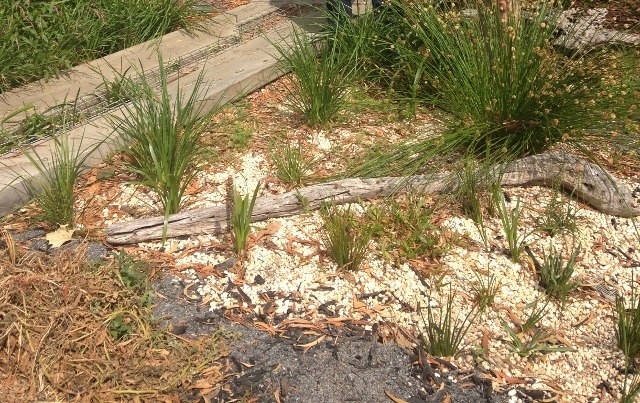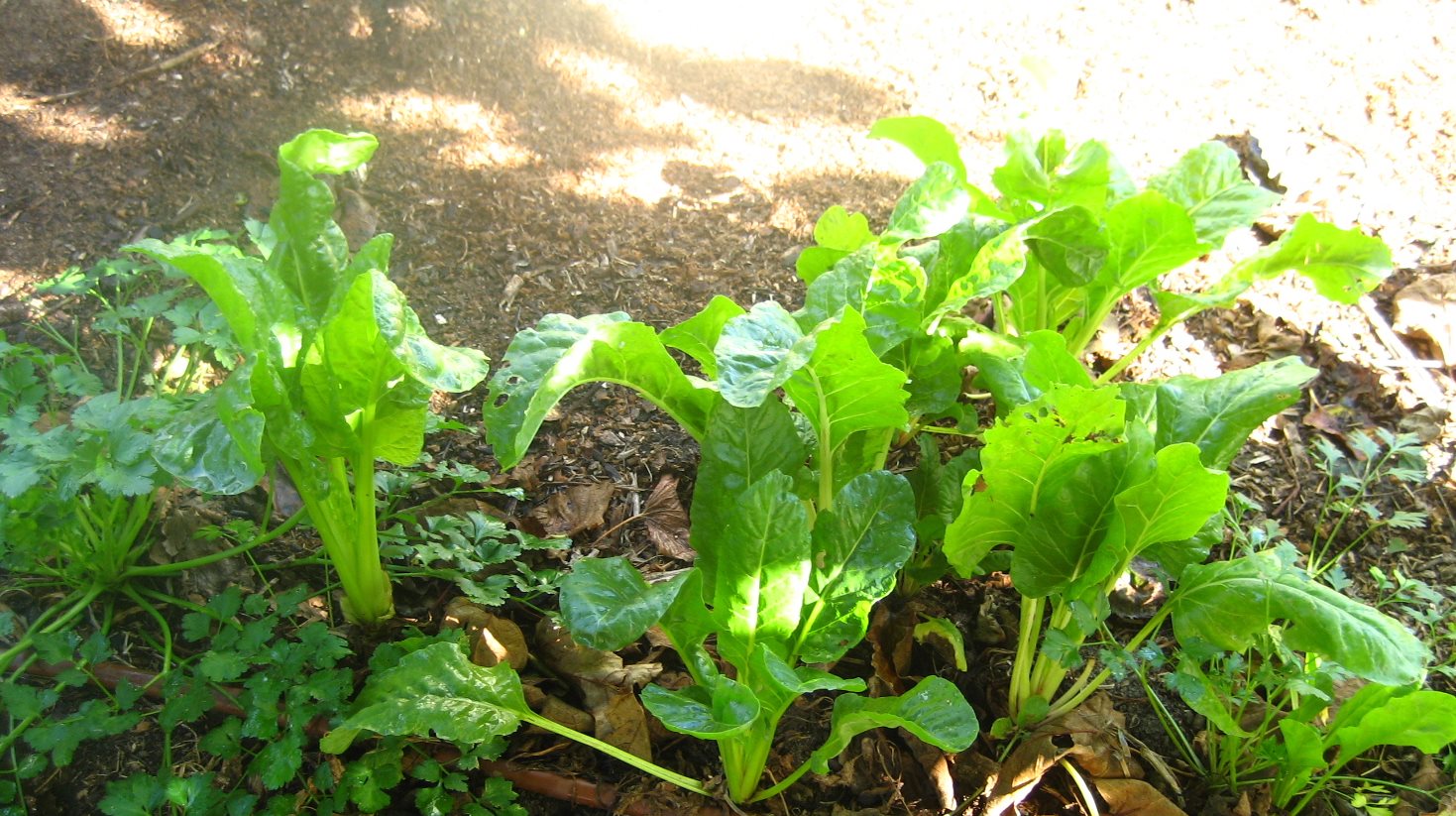A Community Water Conservation Project
Sometimes it’s possible to achieve multiple outcomes at the same time. Through government assistance, a Melbourne community has been able to harvest water for use in their gardens in return for reducing storm water run off and, thereby, improving water quality in a local waterway. This project, run in the Elster Creek catchment in Elwood, Melbourne, highlights the significance of good water management and shows what can be achieved when we value collective action.
Conserving such a precious resource as water has become a major global issue, but at the cutting edge of gardening it’s also a crucial consideration. The Well Waters Project, a $150,000 project funded by the Victorian Government, aims to mitigate the effects of flooding in the area and to clean up water in the Elster Creek catchment. It has engaged community participation by providing rebates for the introduction of water tanks and rain gardens and has brought huge benefits, to plants, animals and people.

Originally swamp land, the Elster Creek catchment covers around 40sq kilometres with water flowing (some of it underground) through areas in the City of Port Phillip, Bayside City Council and Glen Eira and Kingston Councils. It has suffered regularly from flooding and the aftermath of urban storm water -- which is a serious pollutant for many of Melbourne’s waterways. On some occasions in the past, heavy rains have meant that the Elwood Canal, through which storm water is directed to Port Phillip Bay, has been insufficient to cope with the flow causing local flooding. According to Melbourne University’s Professor Tim Fletcher, an expert in urban ecohydrology, by harvesting rainwater and infiltrating it in the urban landscape through rain gardens and storage tanks, run-off can be reduced and water quality of storm water significantly improved.
The project was conceived, and has been managed, by the Port Phillip EcoCentre, an impressive organisation set up sixteen years ago inside the St Kilda Botanic Gardens which provides “a focus for groups and individuals to share knowledge and resources … maximising positive environmental action". The EcoCentre has worked with hundreds of schools from Early Learning to Tertiary Level and its garden is run entirely by volunteers - “an example of environmental action in practice” is how they put it.
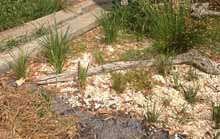 Raising awareness about the Well Waters Project and water problems has included information nights, clean-up days and an audit of the local bird population. Residents – individuals or groups in unit blocks and organisations, including schools – are encouraged to introduce a water tank or a rain garden in return for donating volunteer hours: for this they receive a $25 hourly rebate towards any installation (http://www.wellwatersworkbees.com/).
Raising awareness about the Well Waters Project and water problems has included information nights, clean-up days and an audit of the local bird population. Residents – individuals or groups in unit blocks and organisations, including schools – are encouraged to introduce a water tank or a rain garden in return for donating volunteer hours: for this they receive a $25 hourly rebate towards any installation (http://www.wellwatersworkbees.com/).
What becomes evident as well through this project is the growing popularity of domestic water tanks. Nowadays they have even moved into high-design circles, though they can also be purchased for quite modest amounts in coloured steel and adaptable sizes and shapes to fit anywhere – maybe tucked away beneath decks or situated in a narrow passageway not being effectively used. Buy your tank as big as you can afford as long as it fits comfortably (the bigger the roof the more unpolluted water you will be collecting). During water restrictions the true value of the tank is evident, especially for food-crop growers. Just remember to test tank water each year for toxicity, and try to keep them free of animal droppings and the like.
 The EcoCentre has had expert help from a green plumbing company which was the major provider on the project. Education Officer Bronnie Walsh says other groups that might wish to draw down funding for similar projects can become affiliated at a modest cost to the EcoCentre which could give valuable advice if community organisations are looking for funding through government or corporate sponsorship perhaps to increase the health of their catchment or be involved in the litter hotspots project now running. Further enquiries are best directed to Neil Blake, a former parks ranger, urban fresh food gardening advocate and Port Phillip Baykeeper who is also part of the Centre. In the meantime, Bronnie hopes SGA gardeners will spread the word to anyone in the Elster Creek catchment before the Well Waters scheme winds up at the end of the year. “Of course we believe sustainable gardening has huge ecological significance and increasing the quality of the water through rain-gardens or taking the pressure from the catchment to fill water-tanks rather than risk flooding of the Elwood Canal is an important move in managing water and increasing biodiversity.”
The EcoCentre has had expert help from a green plumbing company which was the major provider on the project. Education Officer Bronnie Walsh says other groups that might wish to draw down funding for similar projects can become affiliated at a modest cost to the EcoCentre which could give valuable advice if community organisations are looking for funding through government or corporate sponsorship perhaps to increase the health of their catchment or be involved in the litter hotspots project now running. Further enquiries are best directed to Neil Blake, a former parks ranger, urban fresh food gardening advocate and Port Phillip Baykeeper who is also part of the Centre. In the meantime, Bronnie hopes SGA gardeners will spread the word to anyone in the Elster Creek catchment before the Well Waters scheme winds up at the end of the year. “Of course we believe sustainable gardening has huge ecological significance and increasing the quality of the water through rain-gardens or taking the pressure from the catchment to fill water-tanks rather than risk flooding of the Elwood Canal is an important move in managing water and increasing biodiversity.”
This project highlights the value of searching for funding opportunities. It's worth exploring local and state government options as well as those with philanthropic organisations, some of which have a variety of small grants available for community initiatives.
Update on Frogs
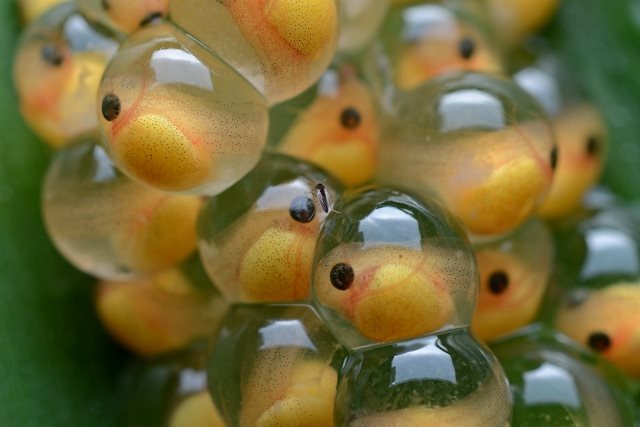 It’s been a number of years since the Year of the Frog was declared and a new international conservation action plan launched. Back then 500 zoos around the world enlisted to take part in an amphibian "Noah’s Ark" where most vulnerable species were moved to protected areas within aquariums and other institutions around the world to guarantee their future survival. Yet the dramatic population decline of frogs continues, with predictions that half of the world’s species will be extinct in twenty years. It sounds an ominous note, not just for all amphibians but the human species as well. What can gardeners do?
It’s been a number of years since the Year of the Frog was declared and a new international conservation action plan launched. Back then 500 zoos around the world enlisted to take part in an amphibian "Noah’s Ark" where most vulnerable species were moved to protected areas within aquariums and other institutions around the world to guarantee their future survival. Yet the dramatic population decline of frogs continues, with predictions that half of the world’s species will be extinct in twenty years. It sounds an ominous note, not just for all amphibians but the human species as well. What can gardeners do?
What a waste to lose these creatures that consume and help control insects, and are themselves an important food source for birds, snakes and other organisms in the food web. They have cultural clout too - the ancient Egyptians regarded them as a symbol of fertility, the Japanese that they are a sign of good luck – and how do we position Kermit?
Frogs, researchers tell us, are bell wethers for the environment, ‘bio-indicators’ positioned in a niche at the boundary of aquatic-terrestrial ecosystems. They are animals especially sensitive to pollutants and pesticides and, as a result, they have fallen victim to pathogens including fungi, viruses and bacteria, wiping out entire populations country by country. A detailed report1 has been prepared for the Australian Government on the threats and characteristics frog diseases and how they should be managed.
Taking action might appear daunting – where to start? - but scientists and ecologists are urging us to help the frogs and other struggling organisms, so making individual efforts that collectively impact on the macro problems. And in helping restore the unbalanced ecosystem, gardeners have a particularly important role to play.
For anyone concerned or curious to find out more, joining a conservation-oriented group is a starting-point to discover the situation in the wash-up of climate change. Internationally, herpetologists regularly blog on the site www.savethefrogs.com organised by ecologist Kerry Kriger. Frogwatch USA is an innovative online data entry, mapping and analysis platform where anyone interested in frogs can explore practical strategies towards survival of the animals. Closer to home, the Amphibian Research Centre champions the cause and looks at issues such as captive breeding and education too. A detailed report has been prepared for the Australian Government on the threats and characteristics frog diseases and how they should be managed.
There are bands of urban frog enthusiasts too, working to raise the amphibian profile – see stickyfrogs.tumblr.com for daily snapshots of a domestic Melbourne colony, gathering young followers from near and far.
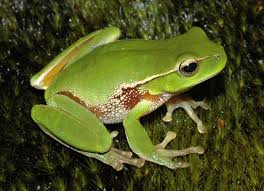 The Frog Census is a community-based biological monitoring program which is contributing to responsible management of frogs in Melbourne's waterways. Zoos Victoria uses membership income to protect native species - the Baw Baw and spotted tree frogs are two. In 2013, it was also behind the release of 80 southern corroboree frogs into disease-free wild enclosures at Mt Kosciuszko.
The Frog Census is a community-based biological monitoring program which is contributing to responsible management of frogs in Melbourne's waterways. Zoos Victoria uses membership income to protect native species - the Baw Baw and spotted tree frogs are two. In 2013, it was also behind the release of 80 southern corroboree frogs into disease-free wild enclosures at Mt Kosciuszko.
These initiatives are encouraging, but, by incorporating ponds, it is gardeners who will restore and maintain a local population that once might have occupied uncultivated land. Since the 1980s, frogs have disappeared fast from our suburbs, a direct consequence of habitat destruction, pollution, pesticide use and even artificial light (it attracts insects away from frog territory).
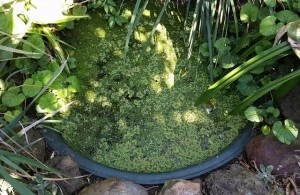 We owe it to them to get back to basics and try to put water into our gardens. A pond is not difficult to introduce (see, for example, one of our earlier posts , Given the permeability of amphibian skin and their general sensitivity in juvenile and adult stage it goes without saying that for a pond to be a frog haven it is essential that your garden stays free of chemicals - products like Roundup and Zero (the commonly used herbicide glyphosate), malathion or carbaryl all greatly increase tadpole mortality. Slug pellets should be banned and won't be necessary anyway, since frogs will eat up all available slugs.
We owe it to them to get back to basics and try to put water into our gardens. A pond is not difficult to introduce (see, for example, one of our earlier posts , Given the permeability of amphibian skin and their general sensitivity in juvenile and adult stage it goes without saying that for a pond to be a frog haven it is essential that your garden stays free of chemicals - products like Roundup and Zero (the commonly used herbicide glyphosate), malathion or carbaryl all greatly increase tadpole mortality. Slug pellets should be banned and won't be necessary anyway, since frogs will eat up all available slugs.
The UK charity froglife.org is in no doubt that making a healthy pond is an important step in helping other local wildlife - "it will quickly colonise with various invertebrates including snails, dragonfly larvae and water boatmen" . As well as supporting the organisms a pond can set up a self-supporting cycle of hydration in the garden,which is preferable, argue environmentalists, to spending precious water on moisture-hungry lawns and thirsty ornamentals.
And don't be impatient. Frogs aren't meant to be shipped in, rather better to set up the right conditions perhaps even some shallow shelved areas where they can do their basking. They should turn up in a year or two.
Maggie Knight has written garden columns for publications including Good Housekeeping and The Melbourne Herald before spending almost twenty years in Europe, where she became involved in community development projects. She is now a consultant for sustainable and creative businesses and mentors for the Victorian Government sponsored Small Business Mentoring Service.
References
- K. Murray, L. Skerratt, G. Marantelli, L. Berger, D. Hunter, M. Mahony and H.Hines. 2011.Hygiene protocols for the control of diseases in Australian frogs. A report for the Australian Government Department of Sustainability, Environment, Water, Population and Communities.
Edible Plants for Shade
There is little to compare in succulence with a tomato or peach that’s enjoyed a sun-drenched life. The challenge is more of us want shade to counter the effects of a warming world and a home that needs natural shade, exteriors protected from fierce heat, but also continue to grow our own healthy chemical-free food plants.
It’s true that in the hottest parts of the country all plants benefit from a little shelter to conserve moisture and modify air temperature. And just when you have shade in the garden, and for how long, also needs to be defined.
And when it is shady does matter: there are cool season vegetables that through summer accept morning sun happily but prefer shady afternoons. This kind of benevolent shelter can make the growing seasons longer for plants like lettuce that tend to bolt in the heat.
And with the rise in average temperatures worldwide there may well be more room now to embrace the shade/edible connection.
Permaculture forums identify a diverse range of reduced-light tolerant plants worth trying, especially in warmer zones. Arrowroot Canna edulis happy to grow beneath tree canopies, was an ancient Inca crop and also has an interesting history in north Queensland where it was eaten regularly in early days of settlement, and the SE Asian edible fern Diplazium esculentum is a subtropical favourite, popular in Indonesia. Similarly, species from Zingiberaceae offer food treats, including the resurrection lily, Kaemferia galangal (known as kencur) a key ingredient for Balinese and Javanese sate sauces. Lots of palms have edible hearts and the paw paw Asimina triloba, from American temperate humid zones, is one of the few trees that is able to fruit in shade.
Rising populations in our cities indicate gardens will continue to be smaller and shadier, often cut off from sun by a neighbouring building. The classic vegetable patch needs adaptation – certainly smaller, often using vertical spaces, but also crucially planned to accommodate the amount of light – or lack of it - using a strategy that prevents some of the problems associated with shade.
And in moderation shade does no harm to sun-loving plants: even broccoli, cabbage, peas and beans, rhubarb and strawberries can make it through with limited shade (though admittedly reduced yield).
Talking stygian gloom is altogether different, but there are crops that will do remarkably well if other nutrient and water needs are cranked up to produce a highly fertile soil environment.
The first step is to grade your shade. It is a fairly vague description, ranging from light caused by low-hanging branches in the pathway of the sun, to partial for several hours each day or full for half a day. The complexity of assessing shade in any garden comes in calculating sunlight hours through each season. And when chasing heat and light sometimes a mobile vegetable garden can be feasible.
In colder areas of the country where the growing season is shorter, coping with shade is more difficult: what might be possible on the Sunshine Coast will be unthinkable for Tasmanian gardeners. It’s observed in Adelaide that food plants believed to want full sun actually tend to do better with some shade. So as a general rule, edible plants, like other types, have to be chosen selectively, beginning with your geographic location.
Lumbered with low light, a gardener must be particularly vigilant to support the growing crops by providing optimum soil and water conditions. Other things could help too … a little more room between plants and careful weeding both bring returns.
Some obvious tasks: get rid of all the branches possible to clear a pathway of light to the crops, minimise the presence of tree roots which suck up water meant for the crops, and look at the way air can circulate around the garden beds because both plants and surrounding built structures can encourage the kind of moisture which invites moulds and other diseases.
Plastic foil mulches can increase photosynthesis and productivity due to higher light levels and are often used for commercial growing. They aren’t endorsed by organisations such as SGA, which believes the disadvantages created – a potential cooking of roots beneath the mulch and leaching of chemicals from plastic into the soil – far outweigh benefits. As an alternative, bright and light painted surfaces to walls or fences will catch the sun and encourage plant activity. An SGA editor’s remark that she had seen mirrors placed vertically around vegetables to help growth took me back several years to a little garden in London’s inner south which shimmered with light, and food crops, thanks to this technique: not only that, the tiny plot visually expanded, and it seemed double its actual size.
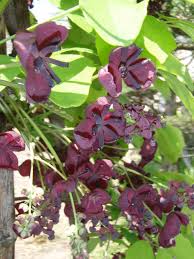 There are exciting choices for the shady garden: wasabi, ginger, fiddlehead and swamp ferns and Eruca sativa, the easily grown annual known as rucola, rocket or, in the US, arugula. Its peppery pungent leaves lift the standard of our salads and pizzas and as well it’s high in vitamin C and potassium.
There are exciting choices for the shady garden: wasabi, ginger, fiddlehead and swamp ferns and Eruca sativa, the easily grown annual known as rucola, rocket or, in the US, arugula. Its peppery pungent leaves lift the standard of our salads and pizzas and as well it’s high in vitamin C and potassium.
How satisfying to discover that lacy-leafed coriander/cilantro rather likes shade, especially in summer, since hot locations encourage bolting. A climber such as the chocolate vine Akebia quinata, is quite happy in shade. Alpine strawberries make a pretty border in these conditions, particularly if the fruit hangs over the edge.
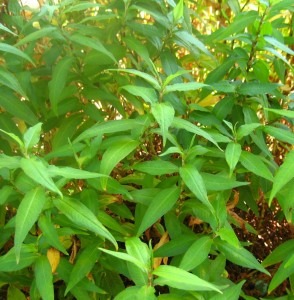 It’s said that as a guiding principle, plants grown for their stems, leaves or buds will put up with some shade better than for roots or fruits, leaving us with ample choices. Yet some gardeners do well with sun-deprived gooseberries, blackberries and raspberries. Also to try rhubarb (fine as long as it has plenty of manure and water), spinach, silverbeet, chard, radish and kale, endive and pak choy, sweet potatoes (Chinese use the juvenile leaves for greens), yams, Swiss chard and kohlrabi.
It’s said that as a guiding principle, plants grown for their stems, leaves or buds will put up with some shade better than for roots or fruits, leaving us with ample choices. Yet some gardeners do well with sun-deprived gooseberries, blackberries and raspberries. Also to try rhubarb (fine as long as it has plenty of manure and water), spinach, silverbeet, chard, radish and kale, endive and pak choy, sweet potatoes (Chinese use the juvenile leaves for greens), yams, Swiss chard and kohlrabi.
Lastly let’s mention the more recognisable shade-tolerant herbs: sorrel, chervil, dill, tarragon, parsley, Vietnamese mint and cardamom.
Who wouldn’t welcome a bit of shade?
Maggie Knight has written garden columns for publications including Good Housekeeping and The Melbourne Herald before spending almost twenty years in Europe, where she became involved in community development projects. She is now a consultant for sustainable and creative businesses and mentors for the Victorian Government sponsored Small Business Mentoring Service.

